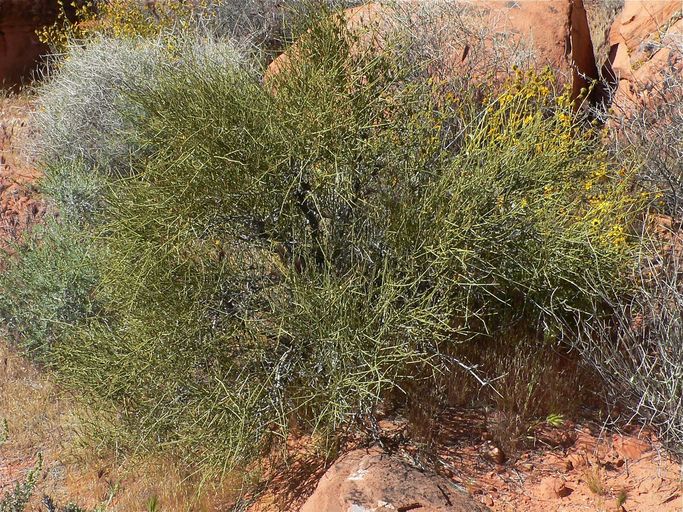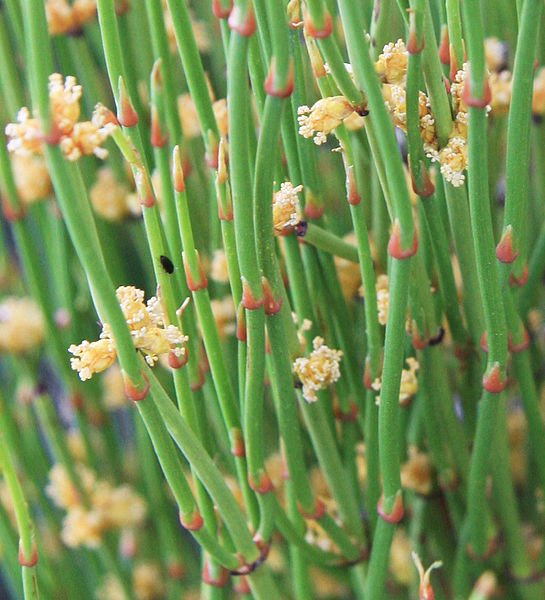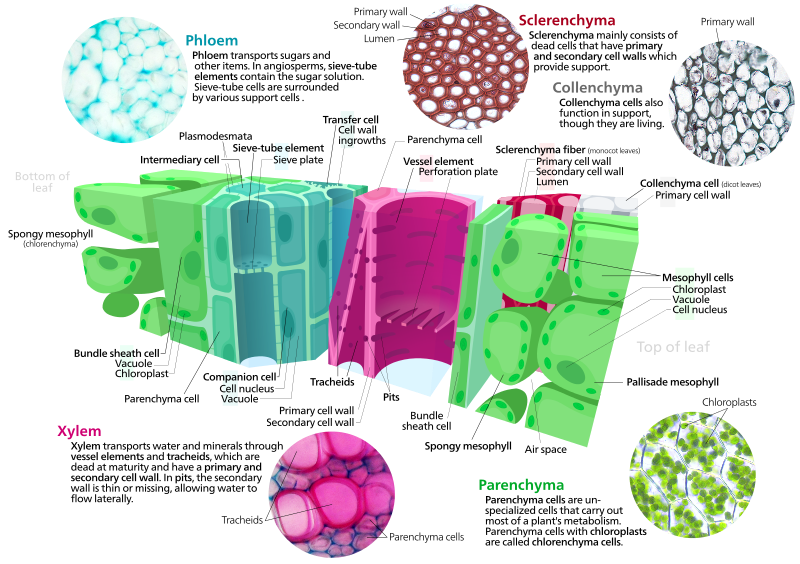Nutrition
Ephedra viridis is a photosynthetic organism, meaning it obtains its nutrients by converting sunlight and carbon dioxide into oxygen and glucose. The oxygen is released into the air, and the glucose is either used within the plant as a source of energy or stored in the plant as starch. In most plants, photosynthesis occurs in the leaves, but since the leaves in Ephedra viridis are so small the plant has adapted for photosynthesis to occur in the stems.

Image created by Bridget Biskup
Another method of nutrient uptake in Ephedra viridis is through the xylem and phloem contained in the plant's stems. Xylem and phloem are important structures when it comes to nutrient uptake and dispersal in plants. The xylem is responsible for transporting water from the roots to the stems and throughout the plant. Many plants contain both a primary and a secondary xylem. Secondary xylem plays a role in the secondary growth (growth in width) of the stems, and is often referred to as the "wood" or "bark" of the plant. The secondary xylem in Ephedra viridis also contains vessel elements. This feature is usually only found in the angiosperms, and Gnetales are the only gymnosperm that contain vessels in their secondary xylem. The phloem in plants is responsible for transporting nutrients and glucose produced by photosynthesis throughout the plant. The image below shows the structure of the xylem and phloem, as well as other tissues that help provide support in plants.
Now that you know how Ephedra viridis gets its fuel, you're probably wondering how it puts its nutrients to work. Well, it is a living organism and has to spend some energy producing offspring. To learn about what kind of sexual activities this plant engages in, visit the Reproduction page, or you can go Home.


